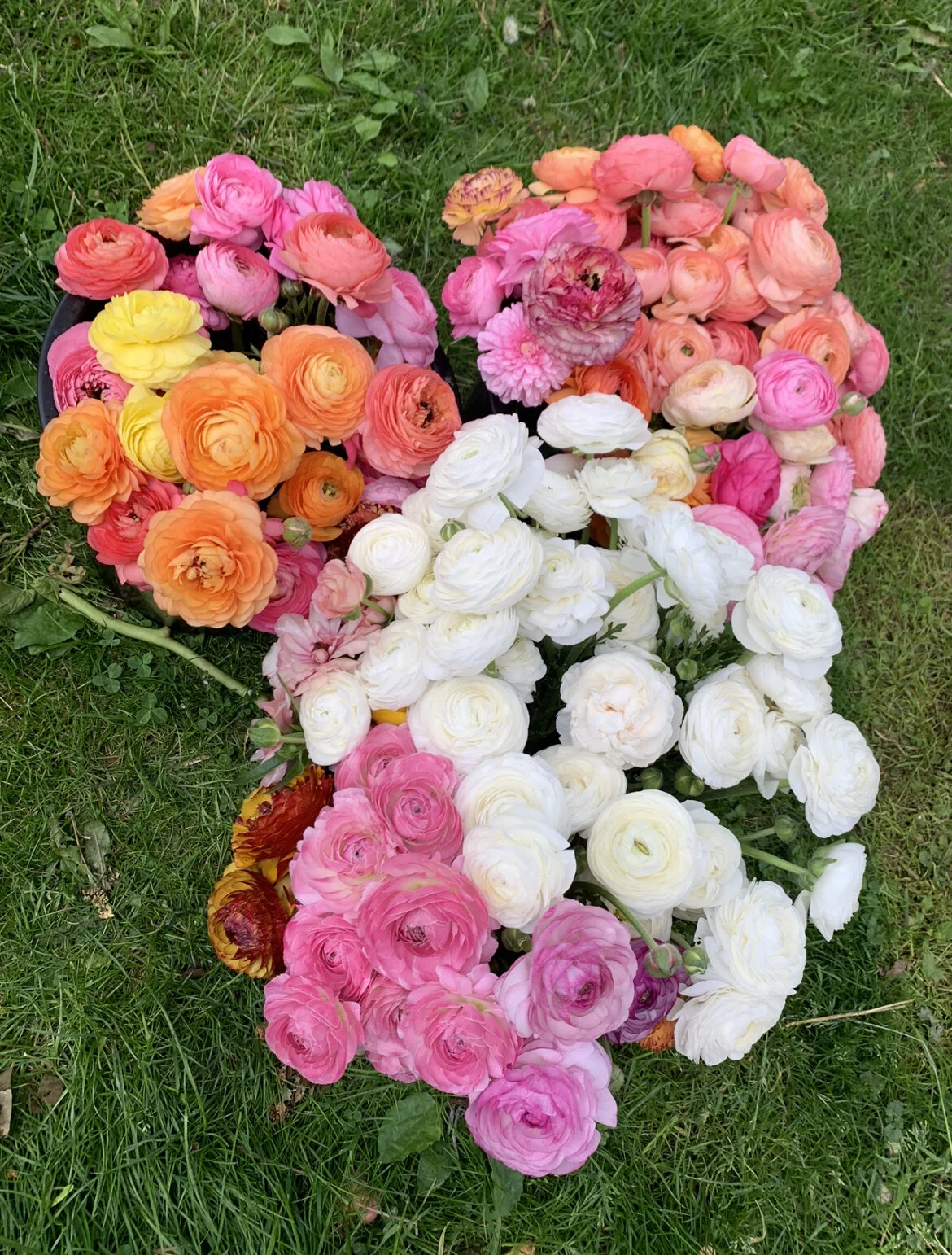Grow Ranunculus & Anemones in your own Gardens (using our 6b field advice!)
Ranunculus and anemones are the superstar spring blooms in our zone 6 SE PA flower field. Now you can grow them in your own gardens with our easy to follow instructions.
FIRST- get your corms! We offer Italian Ranunculus and Anemones, which offer larger blooms & more premium flowers. Shop Now - we are shipping in September & October.
Choose the right time: Plant corms (similar to bulbs) in the late fall-early winter for zones 5 to 8- about 8 to 10 weeks before the last frost date in your area. You will need to protect them over the winter with cover of some type- we like Agribon frost fabric which you can get on Amazon or a field store.
Select a suitable location: Ranunculus and anemone thrives in full sun or very light shade. Ensure the soil is well-draining and rich in organic matter, amend if needed.
Prepare the soil: Loosen the soil and remove any weeds or debris. Add compost or well-rotted manure to enhance soil fertility and drainage.
Plant the corms: Place the corms with the "claws" or concave side down, about 2 to 3 inches deep and 4 to 6 inches apart. Space rows about 9 inches apart. Plants do not get very large so do not worry about crowding. Corms also do well in containers because their footprint stays small and they are easy to protect in the winter.
Water thoroughly: After planting, water the area deeply to settle the soil around the corms. Do not water again until there is sprouting unless your soil is very dry. Ranunculus & anemone do not like to be ‘wet’ and will rot easily if you water them too much while they are dormant. They will take up to 2 weeks to sprout. If they take longer- the soil may be too dry to break dormancy.
Provide regular watering: Once growing- Keep the soil watered, but not waterlogged throughout the growing season. The plants love water but not too much, especially in a cold season, do not keep ‘wet’.
Protect from freeze and temps: Corms cannot freeze once awakened and planting- protect them from extreme temperatures with frost fabric or plant in a covered area such as a low tunnel. Mulch can also protect the corms from freezing- but cannot protect the tender leaves.
Fertilize periodically: Feed the plants with a balanced fertilizer during the growing season, following the manufacturer's instructions. We prefer a balanced fertilizer such as a 15-15-15- and you may need to add some liquid calcium if your stems are weak.
Monitor pests and diseases: Keep an eye out for common pests like aphids or snails. We buy in beneficial larvae from Arbico to treat anything we see and do not spray but your mileage may vary.
Harvest the flowers: Corms begin to bloom typically 12-16 weeks after planting- once temperatures are consistently around 60 degrees. When the flower begins to bud and bloom, let the flowers open and close one full time (day and night) before cutting the flowers in the morning when they are fully open. They last weeks in a vase, and are great to enjoy in a bouquet or arrangement.
Overwintering: In areas with cold winters, you can dig up the corms after the foliage dies back in late spring or early summer. Store them in a cool, dry place until the next planting season- the corms will go dormant again and you can repeat the process!
Now you can grow beautiful ranunculus and anemone plants that will delight you with their vibrant and abundant blooms the same way we do!
Visit our website in summer to preorder your corms for your garden this fall/winter- we sell Italian Ranunculus and Anemones, our favorite corm type and varieties..and ship across the US!
Enjoy a bit of our farm in your gardens this year. Visit Our Online Shop


